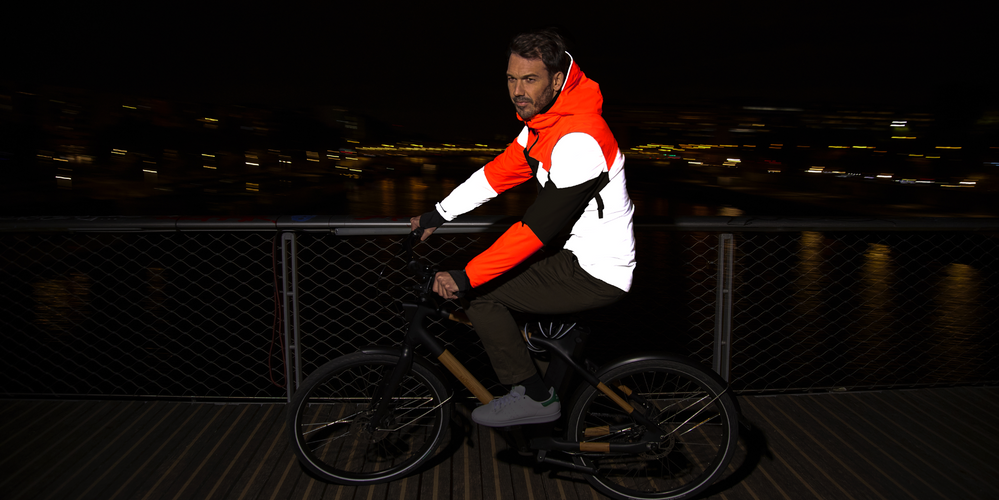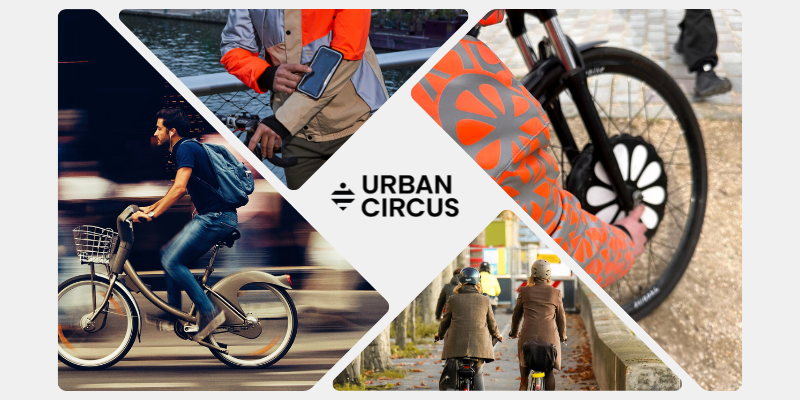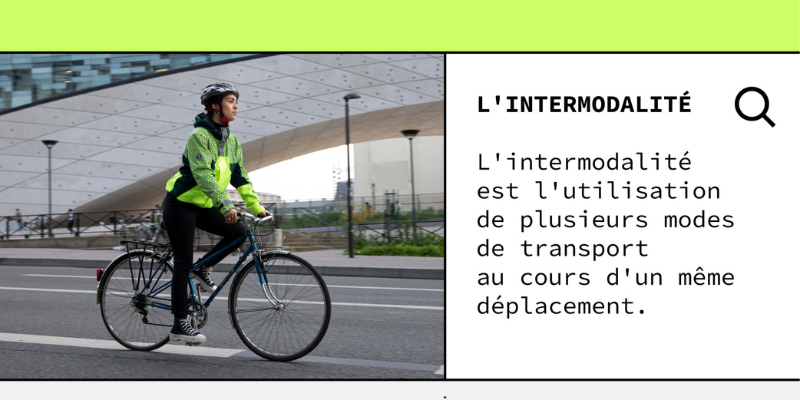
How to properly equip yourself against the rain?
If you want to cycle in the rain without getting soaked, it is essential to have good equipment. From head to toe, there is a range of clothing and accessories that will keep you dry even in wet weather.
Stay visible and dry with the Vuelta rain cape
The Vuelta rain cape is the ideal accessory to ensure you stay dry and safe during downpours. Its bright fluorescent finish provides visibility up to 350m, even at night, while its reflective details keep you visible to other road users. With its easy storage capabilities and lightweight design, it's easy to carry the cape with you all day. Don't worry about bad weather anymore, because with the rain cape you will be well equipped against the rain, whatever happens!
Equip yourself against showers with rain pants
Rain pants with overshoes are the ideal accessory if you want to stay well equipped against the rain. The waterproof fabric provides total protection against rain and, above all, keeps your shoes dry all day long. Essential for your bike rides, even in difficult weather conditions, these rain pants will keep you warm and dry for seasons to come.
Additional protection with the rain jacket
The rain jacket is another essential accessory for any cyclist looking to be well equipped against the rain. An effective rain jacket should be lightweight and made from waterproof, breathable material. This will provide maximum protection to the chest and arms while keeping the rider comfortable, even in wet weather. For additional protection, a traditional poncho or one specifically designed for cyclists may also come in handy. These items keep you dry and comfortable, without limiting your movement or flexibility.
Protect your belongings with a reflective backpack
A reflective backpack is essential for protecting your belongings when cycling around town. Not only does it keep you visible and safe in low light conditions, it protects your gear from rain and unexpected puddles. This faithful everyday companion is equipped with reflective inserts and is 100% waterproof, designed to withstand the harshest weather conditions while protecting everything inside its reinforced walls.
Get a bag cover for your safety
If you already have a bag, investing in a bag cover is a necessity if you want to protect yourself from the rain while cycling. Not only does it keep your belongings protected from the rain, but thanks to its fluorescent and reflective capabilities, you will remain visible and recognizable even in wet conditions. Keep your important documents, laptop, ticket and other essentials dry with our waterproof bag cover.
Adapt your cycling to the rain
Besides equipment, there are some tips and tricks that can help you stay safe and visible even during rainy days.
Anticipate when cycling if the road is wet
When cycling in rainy weather, it is vital to have the necessary anticipation to avoid any risks. Every cyclist should take into account that rain impacts road conditions, extending braking distances and creating dangerous puddles or slippery areas with dead leaves. Therefore, a reasonable approach in rainy weather is essential to ensure safe travel. The need to avoid accidents cannot be overemphasized and anticipating the effects of rain on your route will help you do this.
Know how to brake on a bike in the rain
When encountering difficult conditions while riding a bicycle, it is important to consider the differences in the braking capabilities of your bicycle. Steel rims have less grip and therefore require more time and distance when braking. By lightly tapping the brakes several times, you can remedy this problem. Additionally, brake pads suitable for all weather conditions can be installed for added protection and reliability.
If you're concerned that your rim will be particularly sensitive to rain, it may be best to opt for an aluminum model, as it resists water better than steel. But overall, caution is advised when cycling in the rain and speeding should be avoided as much as possible.
Avoid risky surfaces
Cycling in the rain adds an extra difficulty, as some surfaces you may encounter can be particularly slippery and dangerous. These include metal surfaces and construction or manhole covers that you encounter, as well as tram or tram tracks, which should be carefully avoided if possible.
You should also keep an eye out for white stripes painted on the road, which can make for slippery surfaces as they generally don't grip very well in wet weather. Finally, there's also the risk posed by leaves, oil and puddles, all of which can cause unpleasant accidents if you encounter them.
Understanding a descent in the rain
To ensure a safe descent, it is best to brake before descending rather than reacting by applying the brakes during. Additionally, you should avoid using the front brakes as much as possible, as this can throw you off balance and cause you to fall. As you descend the slope, you should make sure to keep your gaze on the horizon rather than your feet and stay relaxed in your position. As the curve intensifies throughout the descent, it is essential to lean more towards the direction you are turning. Finally, it is also essential not to start pedaling immediately at the end of the turn, otherwise you will lose your balance again.


